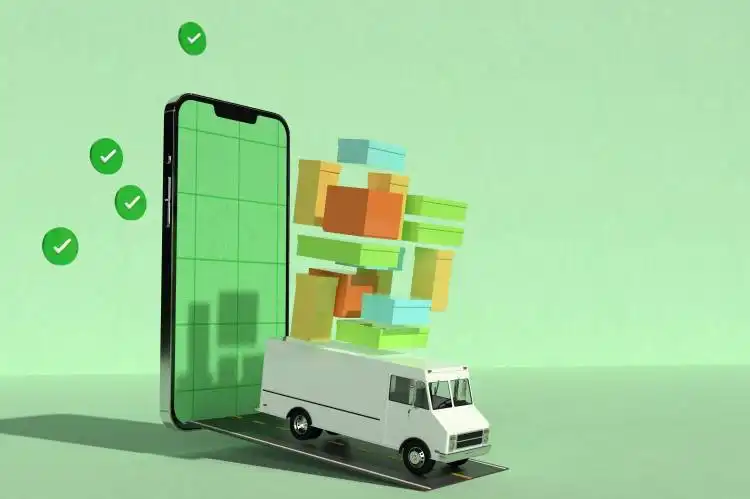Start a Vintage Maps Store
Embarking on a Time-Capsule Adventure: The Lure of the Vintage Maps Store
| Updated


VINTAGE MAPS STORE
Step into the past with the fascinating venture of a Vintage Maps Store! This charming business idea revolves around the trade, collection, and preservation of old maps and cartographic treasures. A time machine of sorts, this store gives customers an intriguing glimpse into historical geography and exploration. Perfect for history buffs, art enthusiasts and curious adventurers alike, let your business be a bridge between epochs, mapping out a journey into the past - all in the comfort of a customer's own home.
Jump to Business Plan
RELATED BUSINESS IDEAS
Browse ALL Retail & Shopping Business Ideas
Discover Your Perfect Domain
Unlock the door to your online success with our hand-picked selection of premium domain names. Whether you're starting a new venture or rebranding an existing one, the right domain can set the tone for your digital presence. Browse through our curated list, each with its unique potential to enhance your brand's visibility and credibility.
VINTAGE MAPS STORE MINI BUSINESS PLAN
This a quick reality check to help you identify the strengths and weaknesses of your business concept before you dive in.
Expected Percent Margins:
- Gross Margin: 55-60% is average for this industry
- Net Profit Margin: 20-30% is seen as healthy for an antique-style shop
Projected Earnings:
- Daily Earnings: Assuming an average transaction of $100, hit $200-$300
- Weekly Earnings: $1,400-$2,100
- Monthly Earnings: $6,000-$9,000
- Annual Earnings: $72,000-$108,000
Actions To Achieve These Numbers:
Stock Your Inventory:
- Initial Product Investment: Depending on the quality and rarity of your maps, expect to invest $10,000-$20,000.
- Find Reliable & Diverse Sources: Develop ties with estate sales, auctions, and map collectors to keep your inventory unique and stocked.
Market Your Business:
- Social Media: Make your maps Instagrammable! Share historically or locally significant maps 3-4 times per week.
- PR: Reach out to local press - interesting and unique businesses are great for feature articles!
Keep Customers Happy:
- Knowledgeable Staff: Have at least one staffer who can speak knowledgeably about the maps' origins and significance.
- Customer Experience: Create tags or signs with interesting facts about each map - people love a good story.
Control Your Costs:
- Rent: Do your best to keep rent under 15% of your expected sales.
- Utilities and Maintenance: Keep your store well-lit and well-heated or cooled - nothing detracts from antique shopping like discomfort!
Remember: Business is unpredictable. These numbers are estimates, and your actual results could differ. Make sure to regularly review and adjust your business plan as needed!
NOT WHAT YOU HAD IN MIND? Here are more ideas



Browse ALL Retail & Shopping Business Ideas
Grab Your Business Website Name
Before you get caught up in the whirlwind of setting up your business, invest in a domain name. It's a small but significant step that lays the foundation for your brand and makes it easier for customers to find and trust you. Just like you wouldn't build a house without securing the land first, don't build a business without securing your domain name.
"Why? Can't that wait?" Here's why it shouldn't
Step 1: Determine if the Business is Right Endeavor
Breakdown of Startup Expenses
When starting a vintage maps store, it is important to understand the startup expenses that will be required to get the business off the ground. These expenses can include the cost of renting a physical space, purchasing inventory, hiring employees, and any other costs associated with setting up the business. Additionally, it is important to consider the cost of any necessary permits or licenses, as well as any marketing or advertising costs. It is important to have a clear understanding of the startup expenses to ensure that the business is financially viable.
Breakdown of Ongoing Expenses
In addition to the startup expenses, it is important to consider the ongoing expenses associated with running a vintage maps store. These expenses can include the cost of rent, utilities, payroll, inventory, and any other costs associated with running the business. Additionally, it is important to consider the cost of any necessary permits or licenses, as well as any marketing or advertising costs. It is important to have a clear understanding of the ongoing expenses to ensure that the business is financially viable.
Examples of Ways to Make Money
When starting a vintage maps store, it is important to consider the various ways to make money. This can include selling vintage maps, offering map restoration services, offering custom framing services, and selling related items such as books, prints, and posters. Additionally, it is important to consider offering online services, such as selling vintage maps through an online store or offering map restoration services through an online platform. It is important to consider the various ways to make money to ensure that the business is profitable.
Step 2: Name the Business
Naming a business is an important step in the process of starting a vintage maps store. It is important to choose a name that is memorable, unique, and reflects the mission of the business. It is also important to make sure that the name is not already in use by another business. Additionally, it is important to make sure that the name is not too long or difficult to pronounce. When choosing a name, it is best to brainstorm a list of potential names and then narrow it down to the best one.
When brainstorming potential names, it is important to consider the type of vintage maps that will be sold in the store. For example, if the store specializes in antique maps, then the name should reflect that. Additionally, it is important to consider the target audience and the geographic area that the business will serve. This will help to ensure that the name resonates with the intended audience.
Once a list of potential names has been created, it is important to research each name to make sure that it is not already in use. This can be done by searching the internet, checking with the local chamber of commerce, and checking with the Secretary of State’s office. Additionally, it is important to make sure that the name is available as a domain name and as a social media handle.
Finally, it is important to make sure that the name is legally protected. This can be done by registering the name with the Secretary of State’s office and by registering the name as a trademark. This will help to ensure that the name is legally protected and that no other business can use it.
Step 3: Secure Financing
When it comes to financing a vintage maps store, there are a few options available. For those who have the capital to invest in the business, self-financing is an option. This involves using personal savings, investments, or other assets to finance the business. Another option is to seek out a loan from a bank or other financial institution. This option requires a good credit score and a solid business plan. Additionally, some entrepreneurs may be able to secure financing from family or friends. This is often a more affordable option, but it can also be risky if the business fails. Finally, crowdfunding is another option for those who want to secure financing for their vintage maps store. Crowdfunding involves raising money from a large group of people, usually through a website or other online platform.
Tips for Securing Financing
When it comes to securing financing for a vintage maps store, it is important to do research and compare different options. It is also important to create a business plan that outlines the goals of the business and how the funds will be used. Additionally, it is important to have a good credit score, as this can help to secure a loan from a bank or other financial institution. Finally, it is important to be aware of the risks associated with each financing option, such as the possibility of not being able to repay a loan or not meeting the crowdfunding goal.
Step 4: Obtain Necessary Licenses and Permits
Before opening a vintage maps store, it is important to research the local regulations and obtain the necessary licenses and permits. Depending on the location, there may be different regulations and requirements for businesses. For example, some states may require a business license, while others may require a sales tax permit. Additionally, some localities may require a zoning permit or a health permit. It is important to research the local regulations and obtain the necessary licenses and permits before opening the business.
Applying for Licenses and Permits
Once the necessary licenses and permits have been identified, the next step is to apply for them. In most cases, this can be done online or in person at the local government office. It is important to keep in mind that the process of obtaining the necessary licenses and permits can take several weeks or even months. Additionally, some licenses and permits may require a fee to be paid. Therefore, it is important to plan ahead and apply for the necessary licenses and permits in advance.
Staying Up to Date
Finally, it is important to stay up to date with the local regulations and renew any licenses or permits that may expire. Additionally, if the business expands or changes in any way, it is important to make sure that the necessary licenses and permits are updated. This will ensure that the business is in compliance with the local regulations.
Step 5: Find a Suitable Store Location
When deciding on a location for a vintage maps store, it is important to consider a few factors. First, the store should be in a location with a high foot traffic, such as a shopping center or a busy street. Second, the store should be in an area with a high concentration of people interested in vintage maps and related items. Third, the store should be in an area with a low crime rate and good public transportation. Finally, the store should be in an area with reasonable rent or lease costs.
Researching Local Regulations
Before signing a lease or purchasing a property for a vintage maps store, it is important to research local regulations. This includes researching zoning laws, building codes, and other regulations that may affect the store. Additionally, research should be done to determine if there are any restrictions on the type of business that can be operated in the area. It is also important to research the local competition to determine if there is enough demand for a vintage maps store in the area.
Securing a Lease or Purchase
Once a suitable location has been identified, the next step is to secure a lease or purchase the property. This process involves negotiating with the landlord or seller to get the best possible terms. It is important to consider the length of the lease or purchase, the cost of the rent or purchase, and any other terms that may be included in the agreement. Additionally, it is important to make sure that the lease or purchase agreement includes provisions for the store to be able to operate as a vintage maps store.
Step 6: Create a Business Plan
Creating a business plan is an important step in starting a business. It should include a description of the business, a market analysis, a competitive analysis, a description of the product or service, a description of the management team, a marketing plan, a financial plan, and a budget.
The description of the business should include the business name, the type of business, the location, the target market, and the goals and objectives. The market analysis should include an analysis of the target market and the competition. The competitive analysis should include an analysis of the competitors and their strengths and weaknesses. The description of the product or service should include the features and benefits of the product or service.
The management team should include a description of the skills and experience of the management team. The marketing plan should include a description of the marketing strategies and tactics that will be used to reach the target market. The financial plan should include a description of the financial resources needed to start and run the business. The budget should include a breakdown of the expected expenses and income.
Step 7: Set Up the Store
Purchasing Necessary Equipment
Before setting up the store, it is important to purchase the necessary equipment. This includes a computer, printer, scanner, and other office supplies. Additionally, it is important to purchase a cash register, a card reader, and a point of sale system. These items will help to make the store run more smoothly and efficiently.
Setting Up the Store
After purchasing the necessary equipment, it is time to set up the store. This includes finding a suitable location, designing the store layout, and setting up the store's website. Additionally, it is important to create a logo and branding for the store. This will help to create an identity for the store and make it easier for customers to recognize it. It is also important to purchase a domain name and hosting for the store's website. This will help to ensure that customers can easily find the store online. Finally, it is important to set up the store's payment system. This will help to ensure that customers can easily pay for their purchases.
Step 8: Market the Store
When it comes to marketing your vintage maps store, there are a number of strategies you can use to get the word out. Social media is a great way to reach potential customers, as well as create a following. You can also create a website for your store, as well as an email list to keep customers informed of any new products or promotions. Additionally, you can create a blog to share your knowledge and expertise about vintage maps. Finally, you can also use traditional marketing methods such as print ads, radio ads, and television commercials.
Tips for Effective Marketing
When marketing your vintage maps store, it is important to be creative and think outside the box. You want to create a unique and memorable brand that will stand out from the competition. Additionally, you want to focus on creating content that is engaging and informative. You should also focus on creating a strong online presence by utilizing social media and other digital marketing techniques. Finally, you should always be sure to measure the success of your marketing efforts so that you can adjust your strategies as needed.
Step 9: Maintain the Store
When it comes to maintaining the store, there are several tips to keep in mind. First, it is important to keep up with the latest trends in the vintage map industry. This can be done by attending trade shows, reading industry publications, and networking with other vintage map store owners. Additionally, it is important to keep the store organized and up-to-date. This includes keeping the shelves stocked with the latest products, as well as ensuring that the store is clean and well-maintained. Finally, it is important to keep up with customer service. This includes responding to customer inquiries in a timely manner, as well as offering discounts and promotions to keep customers coming back.
Tips for Growing the Store
In order to grow the store, it is important to have a marketing strategy in place. This includes creating a website, utilizing social media, and advertising in local publications. Additionally, it is important to create relationships with other vintage map store owners, as well as with local antique stores and flea markets. This can help to increase the store’s visibility and reach. Additionally, it is important to offer unique products and services that set the store apart from its competitors. This can include offering custom framing services, as well as offering exclusive products that can’t be found anywhere else. Finally, it is important to stay up-to-date with the latest technology, such as e-commerce platforms, in order to keep up with the competition.
EXPLORE MORE CATEGORIES
Browse ALL Business Idea Categories
TAKE THE NEXT STEPS









